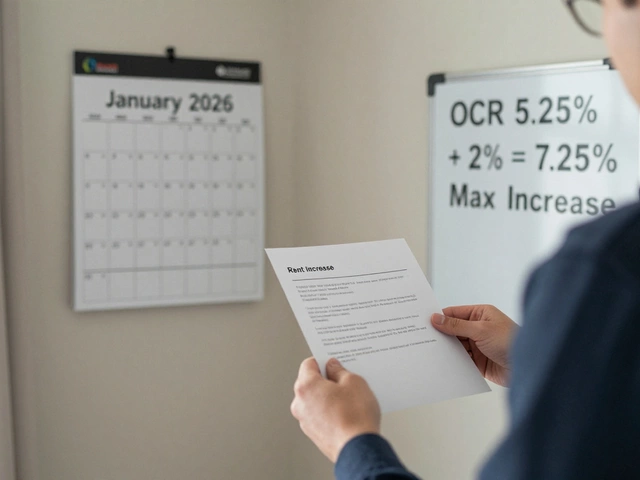Zillow vs. Redfin: Who Is More Accurate with Home Values?

If you’ve ever looked up your house—or your neighbor’s—on Zillow or Redfin, you know those little price tags can mess with your head. One site says $420,000, the other says $447,000. That’s not pocket change. So, who’s actually right? Or are both just really good at guessing?
The truth is, millions of folks use these online estimates every month to shape some huge decisions. But there’s a catch: those flashy numbers come from computer formulas, not in-person visits. Sometimes they’re spot on, but other times, they're just plain off—like when a site forgets your kitchen reno or overlooks the giant crack in the driveway. Let's break down how these numbers are cooked up, and how you can tell when to trust them—or ignore them completely.
- How Home Value Estimates Work
- Comparing Zillow and Redfin's Accuracy
- Real-World Example: Testing the Numbers
- Tips for Getting the Closest Estimate
How Home Value Estimates Work
The first thing to know about any online home value estimate—like what you see on Zillow or Redfin—is that it’s built by a computer. The brains behind these sites are called automated valuation models (AVMs). They suck in tons of data, run some math, and spit out what they think your place is worth. Sounds simple, but there’s a lot more going on under the hood.
AVMs pull info from a bunch of places, like public property records, tax data, recent home sales, local listings, and even your home’s last sale price. Here’s what goes into most online estimates:
- Location: The neighborhood and how close it is to stuff like highways, schools, and shopping.
- Home Features: Things like square footage, number of bedrooms, baths, lot size, and year built.
- Recent Sales: What homes like yours sold for nearby, usually in the last 6–12 months.
- Upgrades: Some models try to figure out if you’ve remodeled, but most miss these unless you or an agent report them.
Here’s a quick look at what these sites use, side-by-side:
| Site | Main Data Sources | How Often Updated |
|---|---|---|
| Zillow | Public records, MLS feeds, user updates | Multiple times daily |
| Redfin | MLS listings, public records | Daily or when new MLS data arrives |
So when you click on a home value estimate, what you’re really seeing is an educated guess—usually based on recent sales nearby and what’s on the market now. It’s not some agent walking through your kitchen. The more data these sites get, the more likely their numbers come close. But even the best computer is still just a computer. That’s why you’ll sometimes spot a price that totally misses the mark if your home’s unusual, freshly renovated, or just hasn’t had many neighbors selling lately.
Comparing Zillow and Redfin's Accuracy
When it comes to figuring out which site is more on the money, it actually depends on where the property is and the type of house you’re looking at. Both Zillow and Redfin use their own formulas to spit out home values. Zillow calls theirs the “Zestimate,” while Redfin simply calls it the “Redfin Estimate.”
Zillow claims their Zestimate has a median nationwide error rate of about 2.2% for on-market homes, which means if a house is listed for sale, the Zestimate is usually within 2.2% of the final sale price. For homes not currently for sale, though, that error jumps up—sometimes over 7%. Redfin, on the other hand, says their Redfin Estimate has a median error rate of around 2.07% for homes on the market and about 6.5% for off-market homes.
| Platform | On-Market Error Rate | Off-Market Error Rate |
|---|---|---|
| Zillow | 2.2% | 7%+ |
| Redfin | 2.07% | 6.5% |
Quick takeaway: Redfin usually beats Zillow by a hair when you compare pure percentages, especially for homes currently listed for sale. But, here comes the catch—Redfin doesn’t cover as many parts of the U.S. as Zillow does. Redfin’s algorithm skips lots of rural or less-populated areas, while Zillow covers nearly every zip code. So, if you’re searching in a major city, both should be pretty close; in the sticks, Zillow might be your only option.
Both platforms pull data from public records, previous sales, and what’s listed online, but Redfin sometimes uses info straight from its own network of agents, which adds some real-world updates. Zillow updates its Zestimate constantly using lots of recent sales in the neighborhood, but nothing beats an actual person walking through the home.
If you’re buying or selling, use these numbers as a starting point but don’t get too emotionally attached. Even the most tech-savvy site can miss things that matter in a real deal—like whether the neighbors blast their music until 2am or if every other streetlight is out. Trust the numbers to get in the right ballpark, then double-check with a local agent for the home run.

Real-World Example: Testing the Numbers
Let’s get out of theory and into the weeds with a real test. Last year, a homeowner in Phoenix listed their place for $525,000. At the same time, Zillow showed the home's value at $556,700. Redfin was a bit less optimistic at $540,000—even though both grabbed data from public records and recent home sales.
The home eventually sold for $530,000—pretty close to Redfin's guess. Why the difference? Redfin says it updates prices every day using sales, property tax info, and MLS feeds. Zillow’s Zestimate is updated less often and sometimes lags behind fast-moving markets.
| Platform | Estimate at Listing | Actual Sale Price | How Close? |
|---|---|---|---|
| Zillow | $556,700 | $530,000 | Off by $26,700 |
| Redfin | $540,000 | $530,000 | Off by $10,000 |
One-off examples are fun, but actual data backs this up. In 2024, Redfin claimed its home-value estimates were within 2.1% of the final sale price for homes on the market, while Zillow said their margin of error was around 2.4%. True, that sounds tiny, but on a $500,000 house, 2% is ten grand, which can kill your budget fast.
If you want to do your own test, pick a house you know—maybe your own or one that just sold in your area. Check both Zillow and Redfin. Compare those to the actual sale price. You’ll see pretty quickly which site is nailing it for your neighborhood.
Tips for Getting the Closest Estimate
Both Zillow and Redfin throw out some eye-catching numbers, but you don’t have to take them at face value. Getting as close as possible to the real deal is totally possible if you know what to look for. Here’s how:
- Cross-check Different Sites: Don’t just rely on one platform. Compare values from Zillow, Redfin, Realtor.com, and even county tax records. A pattern usually appears if you spot-check a few places. Zillow calls its price a “Zestimate,” while Redfin uses “Redfin Estimate”—sometimes they’re hundreds of dollars apart for the same house.
- Update Your Home’s Info: Both sites let homeowners edit or claim a home to update features. Add any upgrades, like a renovated bathroom or a new HVAC, so their formulas can work with better data.
Terry Loebs, founder of Pulsenomics, says, “Automated valuations only go as far as the data they have. The more accurate your info, the closer you’ll get to the truth.”
- Check the Platform’s Error Rate: On their websites, Zillow reports a median error rate for on-market homes of about 2%, while Redfin claims 2.08%. These numbers seem tiny, but on a $500,000 house, that’s still $10,000 either way. Off-market homes have much higher error rates—sometimes over 6%—so don’t trust them blindly.
- Look at Real-Life Sales: Scroll through recent home sales in your neighborhood for a reality check. If actual sale prices are way off from what Zillow or Redfin suggest, take their numbers as a loose guide, not a promise.
- Talk to a Local Agent: No algorithm can see your avocado-green carpet or your secret mold patch. Local real estate agents can do a free CMA (comparative market analysis), and that usually lands way closer to actual sale price than any website alone.
| Platform | Median Error Rate (On-Market) |
|---|---|
| Zillow | 2.0% |
| Redfin | 2.08% |
At the end of the day, if you mix online estimates with good old local knowledge and up-to-date info, you’ll get a lot closer to the real value—no guesswork or crossed fingers required.






